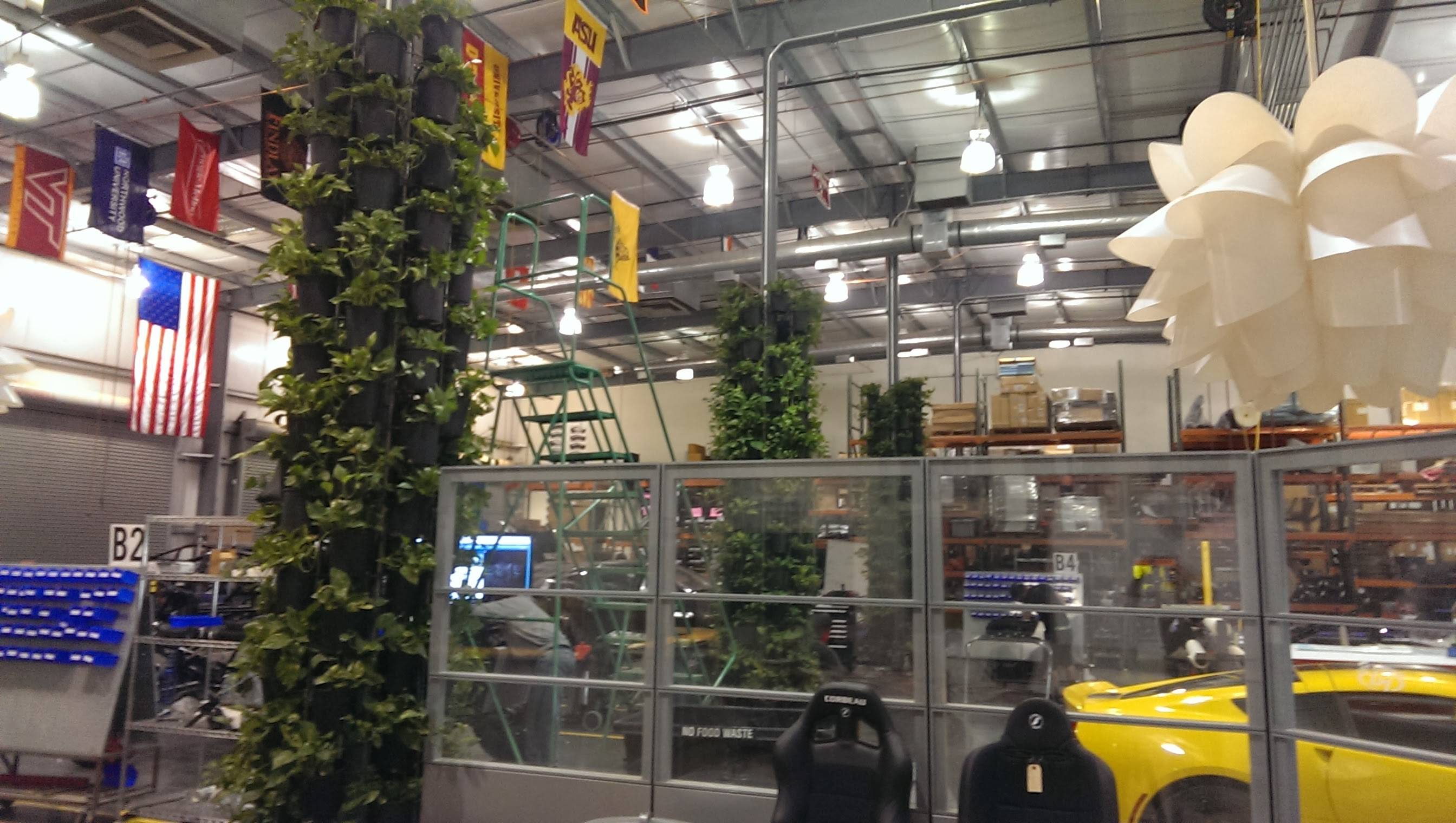I have a very interesting set up and had questions about the differences across our factory floor.
We have three columns of Golden Pothos that are numbered about 96 plants (unless the irrigation failed on one and I removed the plant before it died) per column:

The irrigation is set up for a hose to connect to about my chest height. The water travels through the plastic hose to the top of the column. From here the water gets distributed through regulators to each plant. There is a regulator every two rows. It's kind of a nightmare.
Previously the pots were self-watering, but we had huge issues with proper drainage and we lost almost every plant. This time we made sure each plant had a large amount of drainage. This also has the effect of the higher plants draining into the lower plants. This set up seems to work well, to ensure more even watering across the board.
However, I am regularly finding about 4 to 6 leaves that are dead per plant, about every two weeks. Is this volume normal? I know this question was asked before, but my set up is atypical. We have other plants in the area that seem to be doing much better as far as die-off is concerned. I only remove one or two leaves per two or three plants. They are also pictured:


The other plants are watered by hand. I also water the columns by hand every week I don't water using the irrigation (every other week)
So why what appears to be a significant difference? What can I do to help the columned plants grow better? Is there anything that we're doing wrong?
